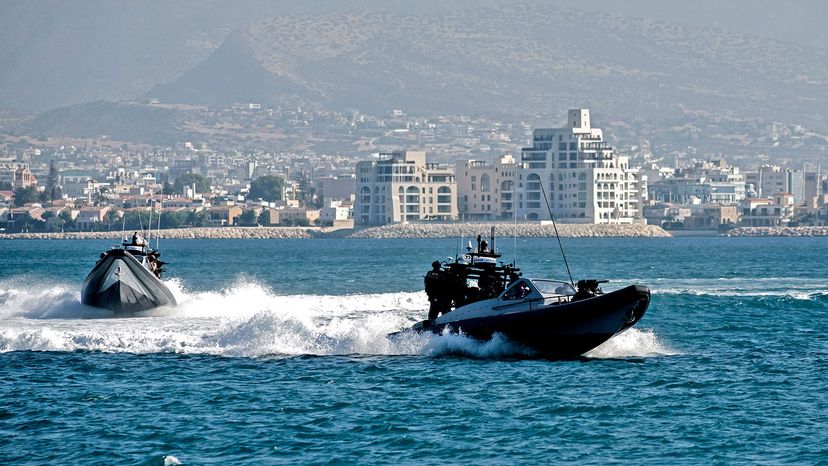Navy SEAL Vehicles

Each vehicle that Navy SEALs use to transport teams and units to their destination has a specific benefit and utility.
One type of vehicle is the SEAL Delivery Vehicle. These are vehicles that operate below the surface of the water to deliver Navy SEALs and their equipment to their mission area. The crew uses underwater breathing apparatus for life support while navigating the submerged SDV to the destination. Remaining completely submerged the entire time, some models of SDVs can deliver several SEALs with their gear to their mission area, remain in the area while they complete the mission, and then return them to their ship.
Advertisement
There are several primary surface watercraft. We list them below.
The MK V Special Operations Craft (SOC) is the most versatile, high-performance combatant craft in the Naval Special Warfare inventory. It is used primarily in medium-range ocean transport of SEAL combat swimmers in environments where the threat is low-to-medium. It is also used for some coastal patrol and maritime interdiction operations, such as destroying an enemy supply line. The MK V can operate from shore facilities or from specially equipped ships.
The NSW Rigid-hull Inflatable Boat (RHIB) is an 36-foot (11-meter) high-speed, high-buoyancy, extreme-weather craft used for moving SEAL tactical elements to and from the ship and beaches. It is large enough to transport an entire SEAL squad.
The Special Operations Craft-Riverine (SOC-R) performs short-range insertion and extractions. It is used in river environments and has a top speed of 40 knots. It holds up to 20,500 pounds (9,300 kilograms) of personnel and cargo and is well-suited to inland waterways. The SOC-R can be transported by U.S. Air Force cargo aircraft and by helicopter.
The Combat Rubber Raiding Craft (CRRC) is a 15-foot (4.5-meter), heavily reinforced, inflatable rubber boat that is useful on many missions. This is the one trainees are carrying overhead during BUD/S training (it's often called a Zodiac — Zodiac manufactures the CRRC). In deployment, it is used for over-the-horizon transportation and dropping and retrieving lightly armed SEALS on beaches and in rivers.
SCUBA
Open-circuit System: An open-circuit system is the typical breathing system, where the diver breathes air from a supply tank and the exhaled air is released into the water.
Closed-circuit Oxygen Systems: With this type of system, the diver breaths 100-percent oxygen, and his exhaled breath is recirculated within the apparatus, where it is filtered and turned back into breathable air. This system is useful for working in shallow water.
Oxygen time is reduced as the water gets colder. For diving in extremely cold water, SEALs must wear dry suits and a specially adapted version of the LAR V Draeger rebreather — a larger oxygen canister allows the diver to breathe underwater for a longer period.
Closed-circuit Mixed Gas System
This system is similar to the closed-circuit oxygen system described above, but the oxygen is mixed with air to maintain a certain "partial pressure of oxygen" (PPO2) level. This increases the depth to which a SEAL can dive and the length of time he can stay there.